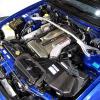Announcements
-
Similar Content
-
Latest Posts
-
By Dose Pipe Sutututu · Posted
Yes, with a modern ECU and a capable tuner. -
By Dose Pipe Sutututu · Posted
That's all dependant on your boost strategy and your tuning abilities (or your tuner's abilities).
-





Recommended Posts
Create an account or sign in to comment
You need to be a member in order to leave a comment
Create an account
Sign up for a new account in our community. It's easy!
Register a new accountSign in
Already have an account? Sign in here.
Sign In Now